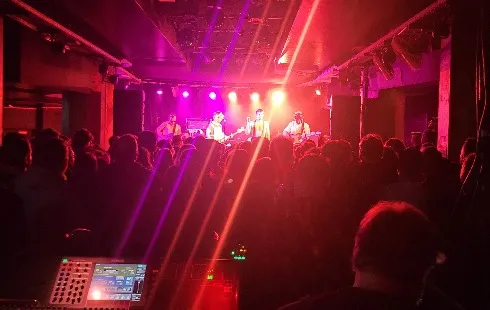
8HoursMining cloud mining platform, daily profits up to $9,337
Section: Business
Consumers in Germany are facing noticeably higher costs for hair salon visits compared to previous years. According to recent industry surveys, the average price for a standard women's wash, cut, and blow-dry is approximately 54 euros, while men typically pay around 33 euros. Simple haircuts often come at lower prices, but more complex treatments such as highlights and coloring have experienced the largest price hikes.
Recent data from the Federal Statistical Office indicates that, since 2020, prices for women's hairdressing services in Germany have risen by over 28 percent. For men and children, the increase is close to 31 percent. The price range for haircuts remains broad, with 28 percent of respondents to a nationwide survey reporting they usually pay between 15 and 29 euros. Another 20 percent spend between 30 and 49 euros, while 14 percent pay more. Only 8 percent manage with less than 15 euros, and approximately a quarter of those surveyed reported not spending any money on haircuts at all. The survey also highlights that men typically pay less than women for similar services.
Factors Driving Rising PricesThe primary reasons behind these rising costs are attributed to increased personnel expenses, higher energy and material prices, and general inflation. Personnel costs alone account for 55 to 60 percent of a salon's total expenditures, making staff wages a significant factor. Additionally, the industry continues to be affected by a shortage of skilled workers, leading to further financial pressure on salon owners.
Industry Sentiment and Customer BehaviorMany hair salons report that customers have become more sensitive to price increases, resulting in reduced client volumes. Industry data suggests that overall revenue growth in the sector is largely due to increased prices rather than a rise in customer numbers. Last year, the total revenue for German hairdressers was estimated at 7.67 billion euros, with a slight decline expected in the current year due to lower demand.
The effects of the COVID-19 pandemic continue to influence consumer behavior. During temporary salon closures, many individuals purchased hair clippers, increasing sales of such devices by nearly 40 percent between late 2019 and 2021. Although sales have since declined, many households remain equipped for home haircuts, reducing the frequency of professional salon visits.
Structural Changes in the SectorThe number of hairdressing businesses in Germany has been decreasing for several years. In 2024, there were just over 80,000 registered salons, with about one-fifth identified as barbershops. The sector currently employs around 150,000 people, a slight decrease from the previous year. The ongoing economic challenges threaten the sustainability of many businesses, and a recovery is expected only if broader economic conditions improve.
Growing Competition from BarbershopsTraditional salons are experiencing increased competition from barbershops, particularly in urban locations. Barbershops, which originally specialized in men's haircuts and beard grooming, often offer services at significantly lower prices. In some areas, new barbershops quickly replace closing traditional salons. Many barbershops have also expanded their offerings to include women's haircuts.
The rise of barbershops has prompted concern within the industry regarding pricing practices and qualifications. Some industry representatives argue that low prices in certain barbershops may not cover operational costs and could reflect differences in staff training, particularly for specialized services such as coloring or perm treatments.
Workforce and Training TrendsThe sector is also grappling with declining interest in hairdressing as a profession. The number of apprenticeships in Germany fell from over 23,500 in 2014 to around 13,500 by 2023, although there has recently been a modest increase. Another notable trend is the growing proportion of men entering the field, now accounting for roughly a third of all apprentices.
Overall, the combination of rising costs, changing consumer habits, and increased competition is reshaping the landscape for hair salons in Germany. Both business owners and employees are adapting to these evolving challenges as the industry looks for stability and growth opportunities in a dynamic market.

Section: Business

Section: Arts

Section: Politics

Section: Health Insurance

Section: News

Section: News

Section: News

Section: Arts

Section: News

Section: Arts
Health Insurance in Germany is compulsory and sometimes complicated, not to mention expensive. As an expat, you are required to navigate this landscape within weeks of arriving, so check our FAQ on PKV. For our guide on resources and access to agents who can give you a competitive quote, try our PKV Cost comparison tool.
Germany is famous for its medical expertise and extensive number of hospitals and clinics. See this comprehensive directory of hospitals and clinics across the country, complete with links to their websites, addresses, contact info, and specializations/services.
Curated by Fried Dähn and Thomas Maos, this event is part of the Sonic Visions series, featuring an engaging performance that intertwines sound, music, and visuals. This edition presents THE WATS, a narrative where three travelers in the desolate, apocalyptic landscapes of New Zealand encounter a...



No comments yet. Be the first to comment!